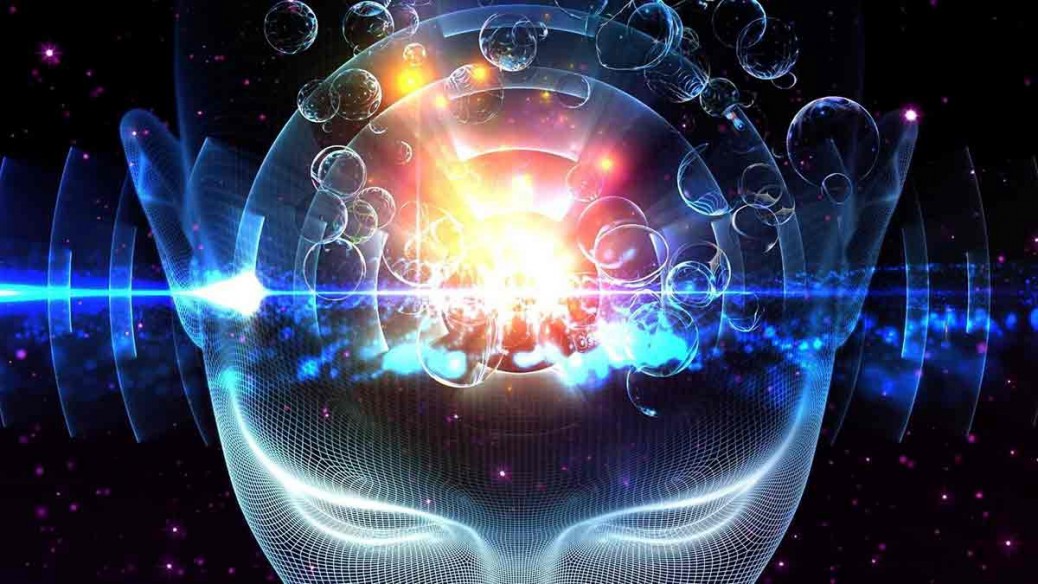Have you watched it? If you pour water from one pot to another, there are gaps. If you pour oil from one pot to another, there are no gaps. Oil has a continuity; water-falls discontinuously. Dhyan means, meditation means, your consciousness should be falling on any object of concentration in a continuity. Otherwise it is flickering. It is constantly flickering; it is not a continuous torch. Sometimes it is there, then disappears; then again is there, then disappears; then again is there. In dhyan you have to make it a continuity, an absolute continuity.
When consciousness becomes continuous, you become tremendously strong. For the first time you feel what life is. For the first time, holes in your life disappear. For the first time you are together.
Your togetherness means the togetherness of consciousness. If your consciousness is like drops of water and not a continuity, you cannot be really there. Those gaps will be a disturbance. Your life will be very dim and faint; it will not have strength, force, energy. When consciousness flows in a continuous, riverlike phenomenon, you have become a waterfall of energy.
This is the second step of samyama, the second ingredient; and then is the third ingredient, the ultimate, that is samadhi. In dharana, concentration, the object is important because you have to choose one object amidst millions. In dhyan, meditation, consciousness is important; you have to make consciousness a continuous flow. In samadhi the subject is important: the subject has to be dropped.
You dropped many objects. When there were many objects, you were many subjects, a crowd, a polypsychic existence – not one mind, many minds. People come to Osho and they say, “I would like to take sannyas, but….” That “but” brings the second, mind. They think they are the same, but the “but” brings another mind. They are not one. They would like to do something and, at the same time, they would not like to do it – two minds. If you watch you will find many minds in you – almost a marketplace.
When there are too many objects, there are too many minds corresponding to them. When there is one object, one mind arises – focused, centered, rooted, grounded. Now this one mind has to be dropped; otherwise you will remain in the ego. The many have been dropped; now drop the one also.
In samadhi this one mind has to be dropped. When one mind drops, the one object also disappears because it cannot be there. They are always together.
In samadhi only consciousness remains, as pure space.
These three together are called samyama. Samyama is the greatest synthesis of human consciousness.
Now you will be able to understand the sutra: “By performing samyama on the two types of karma, active and dormant, or upon omens and portents, the exact time of death can be predicted.” Now if you concentrate, meditate, and get in tune in samadhi, you can be capable of knowing the exact time of death. If you move your samyama, this great synthesis of consciousness, this great power that has arisen in you; if you move it towards death, you will be able to know immediately when you are going to die.
How does it happen? When you go into a dark room, you cannot see what is there. When you go with a light, you can see what is there, or what is not there. You move almost in darkness your whole life, so you don’t know how much prarabdha is still there – prarabdha, the karma that you have to fulfill in this life. When you go with samyama, with light burning bright, you bring the flame in; you know how much prarabdha is left. You see the whole house is empty, just in the corner a few things are left, soon they will disappear. Now you can see when you are going to die.
It is said about Ramkrishna that he was much too interested in food; in fact obsessed. That is very unlikely. Even his wife, Sharada, used to feel very embarrassed; because he was such a great saint, only with one flaw – and the flaw was that he was much too interested in food. He was so much interested that while he was giving satsang to his disciples, just in the middle he would say, “Wait, I am coming,” and he would go to look into the kitchen, what is being cooked. He will just go there and ask, “What is being prepared today?” and then will come back and start his satsang again.
His closest disciples became worried. They said, “This doesn’t look good, Paramhansa. And everything is so perfectly beautiful – never has there walked such a beautiful and perfect man – but this small thing, why can’t you drop it?” He will laugh and will not say anything.
One day his wife Sharada insisted too much. He said, “Okay, if you insist, I will tell. My prarabdha is finished; and I am just clinging to this food. If I drop that I am gone.”
The wife could not believe this. It is very difficult for wives to believe in their own husbands – even if the husband is a Paramhansa it makes no difference. The wife must have thought that he is befooling, or he is trying to rationalize. Seeing that, Ramkrishna said, “Look, I can see that you are not trusting me, but you will know. The day I am going to die, just three days before that day, three days before my death, I will not look at the food. You will bring my thali in, and I will start looking in another direction; then you can know that only three days more am I to be here.”
That too was not believed; they forgot about it. Then, just three days before Ramkrishna died, while he was resting, Sharada brought his thali, his food: he turned over, started looking at the other side. Suddenly the wife realized, remembered. The thali fell from her hands, she started crying.
Ramkrishna said, “Don’t cry now. Now my work is finished; I need not cling.” And exactly after three days he died.
He was clinging in compassion, just trying to create a bondage with one chain. The imprisonment is gone; the prison has disappeared. Out of compassion he was trying to cling, to linger a little longer on this shore, to help those who had gathered around him. But it is difficult to understand Paramhansa. It is difficult to understand a man who has become a siddha, a Buddha, one who has emptied all his sanchita, all accumulated karmas. It is very difficult. He has no gravitation, so Ramkrishna was clinging to a rock. The rock has gravitation. He was clinging to a rock so that he could linger on this earth a little longer.
When you have samyama, a consciousness fully alert, you can see how much karma is left. It is exactly like when a physician comes and he sees and touches the pulse of a dying man, and he says, “Not more than two, three hours.” What is he saying? By long experience he has come to know how the pulse beats when a person is going to die. Exactly that way, a man who is alert knows how much prarabdha is left – how much pulse – and he knows when he has to go.
This can be done in two ways. The sutra says either to focus on death, that is prarabdha karma….
“By performing samyama on the two types of karma, active and dormant, or upon omens and portents, the exact time of death can be predicted.” This can be done in two ways: either you look at the prarabdha or there are a few omens and portents which can be watched.
For example, before one person dies, almost exactly, near about nine months before, something happens. Ordinarily we are not aware, because we are not aware at all, and the phenomenon is very subtle. I say almost nine months because it differs. It depends: the time between the conception and the birth will be the time. If you were born after nine months being in the womb, then nine months. If you were born after being ten months in the womb, then ten months. If you were born after seven months in the womb, then seven months. It depends on the amount of time between the time of conception and birth. Exactly the same time before death, something clicks in the hara, in the navel center. It has to click because between the conception and birth there was a gap of nine months: nine months you took for birth; exactly the same time will be taken for death. As you prepared nine months in the mother’s womb for birth, you will have to prepare nine months to die.
Then the circle will be complete. Something in the navel center happens. Those who are aware, they will immediately know that something has broken in the navel center; now death is coming closer. Approximately nine months.
Or for example, there are other omens and other portents. A man, before he dies, exactly six months before he dies, becomes by and by incapable of seeing the tip of his own nose because eyes start turning upwards, very slowly. In death they turn completely upwards, but they start the turning, the returning journey, before death. That happens: when a child is born, the child takes almost six months, that is usually – there may be exceptions – the child takes six months to have fixed eyes.
Otherwise the eyes are loose. That’s why children can bring both their eyes together near the nose, and can take them far away to the corners very easily. Their eyes are still loose. The day a child’s eyes become fixed: if that day comes after six months or nine months or ten or twelve months, then exactly the same will be the time; again the eyes will start becoming loose and moving upwards.
That’s why in India villagers say – they must have come to know from yogis – that before a man dies he becomes incapable of seeing the tip of his own nose.
And there are many methods in which yogis continuously watch the tip of their nose. They concentrate on it. People who have been concentrating on it, suddenly one day realize they cannot see their own nose. Now they know death is approaching, near.
According to yoga physiology there are seven centers in man. The first, the genital organs; and the last is sahasrara, in the head; between these two there are five others. Whenever you die, you die from a particular center. That shows your growth that you have been doing in this life. Ordinarily, people die through the genital organ, because the whole life people live around the sex center, continuously thinking of sex, fantasizing about sex, doing everything about sex – as if the whole of life seems to be centered around the sex center. These people die through the sex center. If you have evolved a little and you have attained to love, gone beyond sex, then you will die from the heart center. If you have evolved completely, if you have become a siddha, you will die from the sahasrara.
The center you will die from will have an opening because the whole life energy will be released from there….
Osho has shared – Just a few days before, Vipassana died. Her brother Viyogi was asked to hit her head; that has become symbolic in India. When a person dies and is put on the funeral pyre, the head has to be hit. Just symbolic, because if the person has attained to the ultimate, then the head will break on its own; but the person has not attained. But we hope and pray, and break the skull.
The point of release becomes open. This point can be seen. Some day or other, when Western medical science will become aware of yoga physiology, this also will become part of all postmortems – how the person died. Just now they see only whether he died naturally or was poisoned or killed or committed suicide – all ordinary things. The most basic thing they miss, which has to be there on the report – how the person died: from the sex center, from the heart center, or from sahasrar – from where he died. And there is a possibility – and yogis have done much work on it – it can be seen in the body because that particular center breaks, as if an egg has broken and something has gone out of it.
When somebody who has attained to samyama becomes, just three days before he dies, aware from what center he is going to move, almost always he moves from sahasrara. A certain activity, a movement, just at the top of the head starts working three days before one dies.
These indications can prepare you how to receive death, and if you know how to receive death in a great celebration, in great joy, in delight – almost dancing and in ecstasy – you will not be born again. Your lesson is complete. You have learned whatsoever was to be learned here on this earth; now you are ready to move beyond for a greater mission, for a greater life, for a more unlimited life.
Now you are ready to be absorbed by the cosmos, by the whole. You have earned it.
One thing more about this sutra. The kriyaman karma, the day-to-day karma, is just a very small fragment; in modern psychological terms we can call it the “conscious.” Below it is prarabdha; in modern psychological terms we can call it the “subconscious.” Even below that is sanchita; in modern psychological terms we can call it the “unconscious.”
Ordinarily, you are not aware of your day-to-day activities, so how can you be aware of prarabdha or sanchita? Impossible. So start by becoming aware of day-to-day activities. Walking on the road, be alert. Eating your food, be alert. Remain watchful of what you are doing. Remain with the activity.
Don’t go here and there. Don’t do things like a zombie. Don’t move as if you are in deep hypnosis.
Whatsoever you are saying, say everything fully alert, so that you are not going to repent ever.
When you say, “I am sorry. I said something which I never wanted to say,” that simply shows you were asleep, not aware. When you say, “I did something, I don’t know why and how. I don’t know how it happened. I have done it in spite of myself,” then remember, you worked asleep. You are a somnambulist walking in sleep.
Make yourself more and more alert. That is the meaning of being here-now. If you are listening: you can be just the ears. Right now if you are seeing: you can be just the eyes, fully alert, not even a thought passing through your mind, no disturbance, no cloudiness inside. Just focus on me – totally listening, totally seeing – being herenow: that is the first step.
If you attain that, the second step becomes available; then you can move into the subconscious.
Then when somebody insults you, you will not become aware only when you become angry. You will become aware immediately that somebody has insulted – there, a certain anger has moved into the subconscious depth of your being, just a small wave, very subtle. If you are not very sensitive and aware, you will not know it – unless it erupts into the conscious you will not know it. By and by you will become aware of subtle nuances, subtle shades of emotions – that is prarabdha, the subconscious.
When you become aware of the subconscious, another step will become available to you. The more you grow, the more growth becomes possible to you. You will be able to see, now, the third step, the final step, of becoming aware of sanchita, the accumulated past. Once you move into the unconscious – that means you are taking the light of consciousness into the deepest core of your being – you will become enlightened. That is the meaning of becoming a Buddha – nothing is in the dark now. Every nook and corner is lighted. Then you live, you act, but you don’t accumulate any karma.
Tags: Patanjali Yoga Sutra 36 Togetherness Of Consciousness









